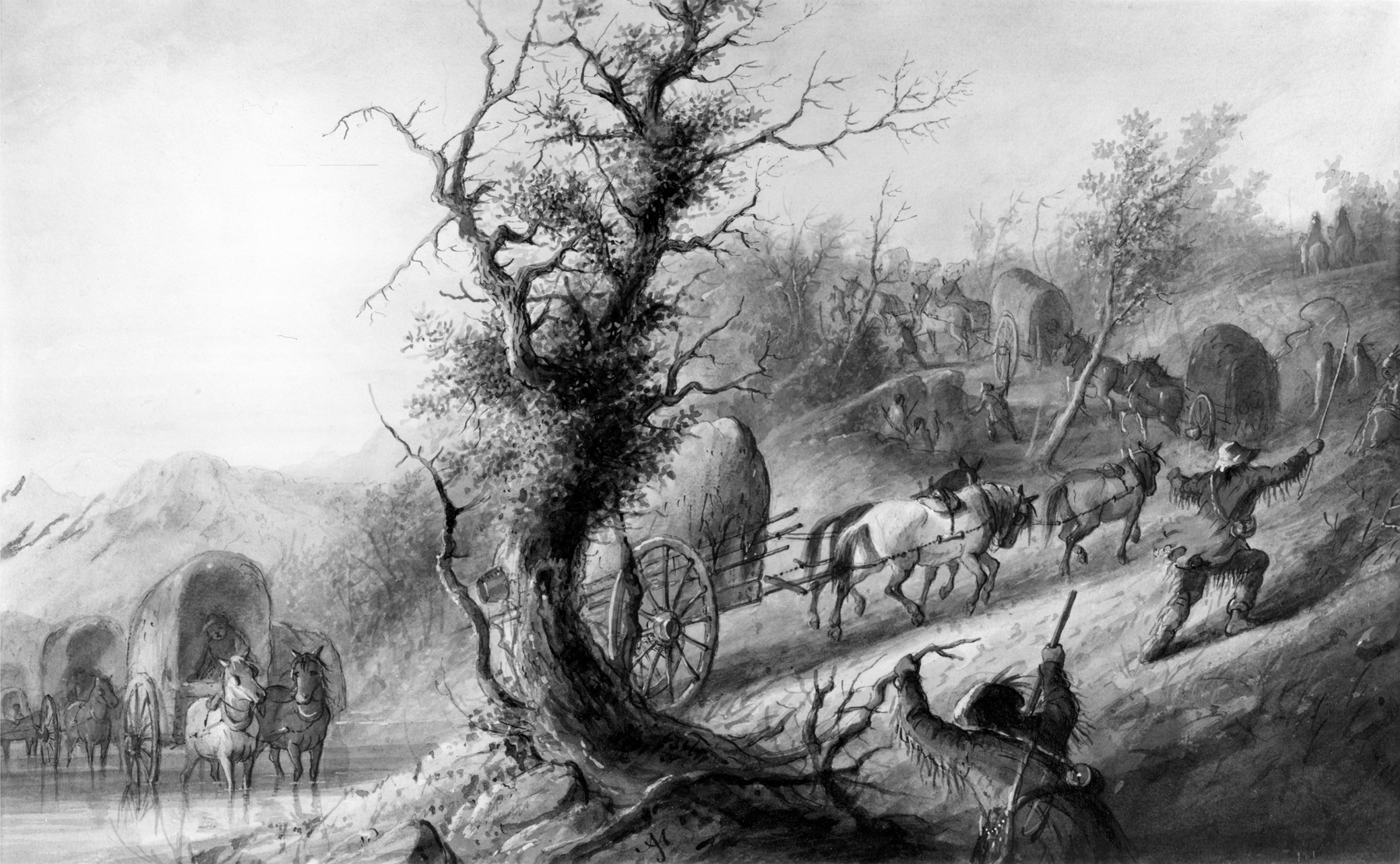Landing the Charettes
(18th and 19th Centuries )
Extracts from Alfred Jacob Miller’s original text, which accompanied his images of Native Americans, are included below for reference. These words, which shaped how Miller’s contemporaries viewed the watercolors, reveal the racism and sexism embedded in 19th-century exploration and colonization of the western part of what is today the United States.
"In crossing some of these rivers we encountered banks 40 or 50 feet high, with a rough road so steep that it was essential to unharness the mules & horses;- attach ropes to the wagons, man them and pull until they reached the table land,- while this heavy and overpowering work was bing done by the Trappers, the Indians would be sitting or standing near us, and looking at us with quiet complacency - presents and all reasonable inducements were offered them to lend a hand. Not a man would stir. At last the Trapers, losing all patience, change their tactics and give them a round of peculiar French expletives,- thus throwing away their religion and good temper at the same moment. Luckily for the poor Indians, they were innocuous, as most likely they understood not a single word. The inquiry did not occur,- by what right we require them to help us? The scene of the sketch is where horses are available. Some attached to the vehicles are essaying the hill while others are in the river below, awaitign thier turns." A.J. Miller, extracted from "The West of Alfred Jacob Miller" (1837).
In July 1858 William T. Walters commissioned 200 watercolors at twelve dollars apiece from Baltimore born artist Alfred Jacob Miller. These paintings were each accompanied by a descriptive text, and were delivered in installments over the next twenty-one months and ultimately were bound in three albums. Transcriptions of field-sketches drawn during the 1837 expedition that Miller had undertaken to the annual fur-trader's rendezvous in the Green River Valley (in what is now western Wyoming), these watercolors are a unique record of the closing years of the western fur trade.
Inscription
Provenance
Provenance (from the French provenir, 'to come from/forth') is the chronology of the ownership, custody, or location of a historical object. Learn more about provenance at the Walters.
William T. Walters, Baltimore, 1858-1860, by commission; Henry Walters, Baltimore, 1894, by inheritance; Walters Art Museum, 1931, by bequest.
Geographies
USA (Place of Origin)
Measurements
H: 9 1/4 x W: 15 in. (23.5 x 38.1 cm)
Credit Line
Commissioned by William T. Walters, 1858-1860
Location in Museum
Not on view
Accession Number
In libraries, galleries, museums, and archives, an accession number is a unique identifier assigned to each object in the collection.
In libraries, galleries, museums, and archives, an accession number is a unique identifier assigned to each object in the collection.
37.1940.181



